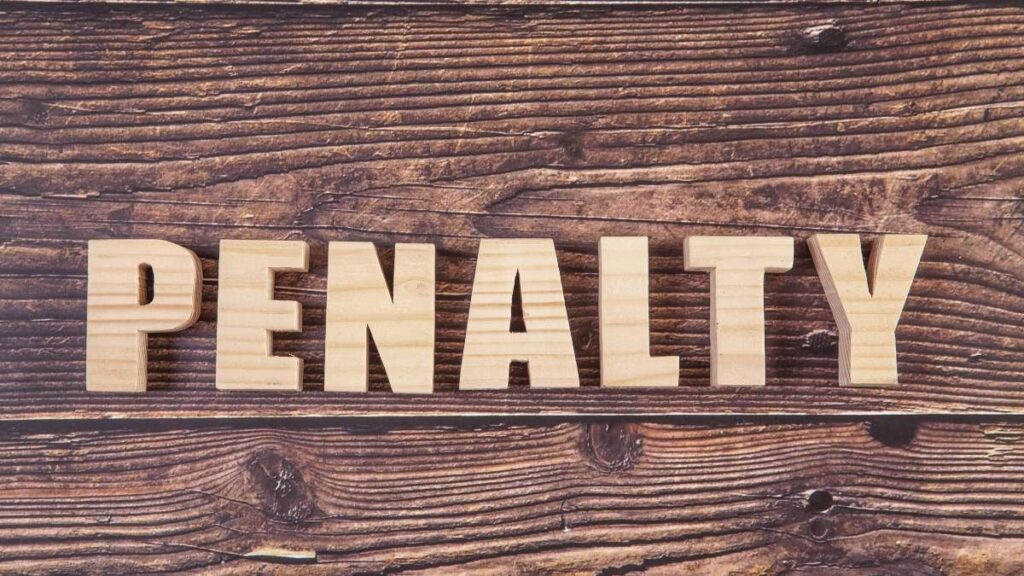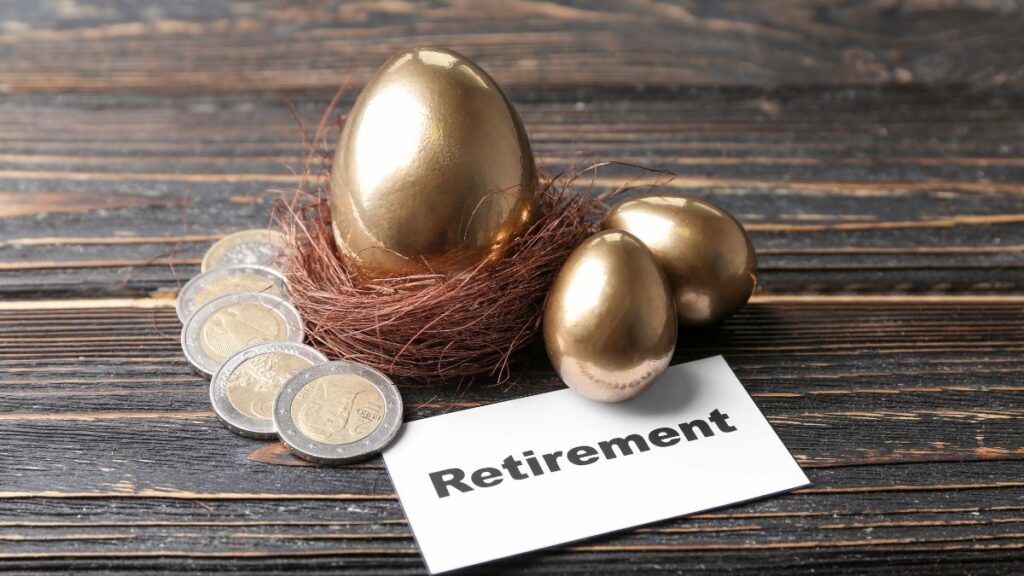
At 40, Sarah was exhausted from her corporate job but terrified when she calculated she had 27 more years until traditional retirement—except she didn’t.
Most 40-year-olds face a daunting reality: another 25 to 30 years of work. But starting at 40 gives you 15 years to build enough wealth to retire at 55 through the FIRE movement (Financial Independence, Retire Early).
You’ll learn the exact savings rate needed to retire in 15 years, how to access retirement funds before 59½ without penalties, healthcare strategies to bridge the gap until Medicare, and real numbers showing how much you need based on your spending. Early retirement strategies work. Thousands prove it daily.
Understanding the Math: Your Early Retirement Number
You need to know one number before anything else. It’s called your FIRE number. FIRE stands for Financial Independence, Retire Early.

Here’s the simple version. Take what you spend in a year. Multiply it by 25. That’s your target.
Say you spend $50,000 a year. Your FIRE number is $1.25 million ($50,000 × 25).
But wait. That’s for normal retirement at 65.
You want to retire at 55. That changes things.
You need your money to last longer. Probably 30 to 40 years instead of 20 to 25 years. So financial experts suggest a different number for early retirement.
Multiply your yearly expenses by 33 instead of 25.
Same $50,000 in expenses? Now you need $1.65 million. That’s your real target.
Why 33 instead of 25? It comes down to withdrawal rates.
The old rule says you can take out 4% of your savings each year. That’s the 25x rule. But that 4% rule was built for 30-year retirements, not 40-year ones.
For early retirement, you need to be more careful. Fidelity says use a 3% withdrawal rate if you’re retiring before 62. That’s where the 33x rule comes from.
Let’s make this real. You’re 40 years old. You spend $60,000 a year right now. You want to retire at 55.
Here’s your math:
- $60,000 × 33 = $1,980,000
- That’s your target number
- You have 15 years to get there
Sounds like a lot? A recent survey found that most Americans think they need $1.5 million to retire. You’re in the same ballpark.
But here’s what most people get wrong. They calculate based on their income, not their expenses.
Wrong: “I make $100,000, so I need to replace $100,000 in retirement.”
Right: “I spend $65,000 a year, so I need to replace $65,000.”
See the difference? If you cut your spending now, your target number drops. Every dollar you don’t spend does double duty. It’s one less dollar you need to save AND one less dollar to fund in retirement.
Think about it this way. Cut your expenses from $60,000 to $50,000 a year. Your target just dropped from $1,980,000 to $1,650,000. That’s $330,000 less you need to save.
Your FIRE number isn’t set in stone. You control it by controlling your spending.
💡 TIP: Use free FIRE calculators from sites like Playing With FIRE or Engaging Data to run your personal numbers. Input your current age (40), target retirement age (55), annual expenses, and current savings. Adjust your savings rate until you hit your target date. This visual tool shows exactly what’s possible.
The Critical Savings Rate: How Much You Need to Save
Most people save 10% to 15% of their income for retirement. That’s fine if you want to work until 65. You don’t. You want to retire at 55.

That means you need to save way more. People in the FIRE movement typically save 50% to 75% of their income.
At 40, with 15 years to go, you need to save at least 40% to 60% of your income.
Here’s why savings rate matters more than anything else.
Your savings rate determines when you can retire. Not your income. Not your investments. Your savings rate.
Someone earning $60,000 and saving 50% will retire before someone earning $150,000 and saving 10%. Every time.
Let’s look at the numbers:
| Savings Rate | Years Until Retirement |
|---|---|
| 30% | 28 years |
| 40% | 22 years |
| 50% | 16 years |
| 60% | 12 years |
| 70% | 8 years |
You’re starting at 40. You want to retire at 55. That’s 15 years.
According to this table, you need to save between 50% and 60% of your income. That lines up perfectly with your timeline.
Save 50% of your take-home pay? You can retire in about 16 years. That gets you to 56.
Want to retire at exactly 55? Push that savings rate to 55% or 60%.
“But how do I save that much?” you’re thinking.
You do two things. Cut expenses. Increase income. We’ll cover both in detail.
Right now, understand this: every percentage point in savings rate matters.
Here’s a real example. A household earning $100,000 a year saves $50,000 annually. That’s a 50% savings rate. They can achieve financial independence in 15 to 17 years.
Another example from research on early retirement: cutting small recurring expenses can have a huge impact. Someone cut cable TV and their daily coffee shop habit. Their savings rate went from 10% to 15%. That one change let them retire 8 years earlier.
Think about that. Eight years of your life bought back by canceling cable and making coffee at home.
Here’s how to calculate your current savings rate:
- Add up all the money you saved last year (401k, IRA, taxable investments, extra mortgage payments)
- Divide that by your take-home pay
- Multiply by 100
Example: You saved $30,000. You earned $80,000 after taxes. That’s $30,000 ÷ $80,000 = 0.375 or 37.5% savings rate.
If you’re at 37.5% now, you need to get to 50% or higher. That means finding another $10,000 to save each year.
Sounds hard? Break it down monthly. That’s $833 more per month. Can you cut $400 in expenses and earn $400 more in side income? Then you’re there.
The math behind early retirement is actually simple. Save more than you spend. Invest the difference. Do it long enough. You’re done.
At a 50% savings rate, you save one year of expenses for every year you work. After 16 years, you’ve saved 16 years of expenses. Add in investment growth, and that’s how you get to your FIRE number.
💡 TIP: Track every dollar for one month using apps like Copilot or Empower. You can’t improve what you don’t measure. Most people discover $500 to $1,500 in monthly expenses they didn’t realize they could cut. That’s $6,000 to $18,000 extra toward retirement annually. That could shave 2 to 3 years off your working life.
Slash Your Expenses Without Feeling Deprived
You can’t save 50% of your income by skipping lattes. Sorry.
You need to cut the big stuff. The Big Three: housing, transportation, and food. These typically eat up 50% to 70% of your budget.

Cut here first. Everything else is just noise.
Let’s start with housing. It’s probably your biggest expense.
Most financial advisors say housing should be 25% to 30% of your income. For early retirement, aim for under 25%.
Say you make $100,000 a year. That’s about $6,250 per month after taxes. Your housing should cost less than $1,563 per month.
If you’re spending $2,500 on a mortgage? You need to change something.
Options:
- Downsize to a smaller house
- Move to a cheaper area
- Rent out a room
- House hack (buy a duplex, live in one side, rent the other)
Real example: Mark, 42, moved from a $380,000 house to a $250,000 townhouse. His monthly housing costs dropped by $800. He also sold his truck and drives a paid-off sedan. These two changes alone saved $15,600 annually. Over 15 years with investment growth, that’s $234,000.
Transportation is next. The average American spends $6,000 to $10,000 per year per car. That includes payments, insurance, gas, and maintenance.
Can you be a one-car household? Many families can if they’re honest about it.
Work from home? Do you really need two cars?
Live in a city with good transit? Sell a car.
Switching from two cars to one saves you $6,000 to $10,000 per year. That’s real money.
Food is the third big one. The average American household spends $800 to $1,000 per month on food. About half is groceries. Half is eating out.
Cut your restaurant spending in half. Start meal planning. Buy generic brands. That can easily drop your food bill from $800 to $450 per month. That’s $4,200 per year saved.
Here’s what these big cuts look like combined:
- Housing: Save $800/month = $9,600/year
- Transportation: Save $500/month (one less car) = $6,000/year
- Food: Save $350/month = $4,200/year
- Total: $19,800/year saved
Invest that $19,800 at 8% returns for 15 years? You’ll have $570,000.
Now let’s talk about the small stuff that adds up.
Subscriptions. The average American spends $200 per month on subscriptions. Netflix, Spotify, gym memberships, meal kits, Amazon Prime, app subscriptions.
Cancel half of them. Save $1,200 per year.
Do you watch all those streaming services? Or just Netflix and one more? Cut the rest.
Here’s the key mindset shift. This isn’t about deprivation. It’s about being intentional.
Ask yourself: “Does this expense bring me real happiness? Or is it just default spending?”
A $500 monthly car payment on a nice SUV? If you love that car and it brings you joy, keep it. If you just needed a car and bought what the salesman sold you, replace it with a $10,000 used sedan.
The FIRE movement isn’t about being cheap. It’s about cutting the things that don’t matter so you can afford what does. In this case, what matters is retiring 10 years early.
Every permanent spending cut has a double effect. You save money now. And you need less money in retirement.
Cut your annual expenses from $60,000 to $50,000? You just lowered your FIRE number from $1,980,000 to $1,650,000. And you have an extra $10,000 per year to invest toward that smaller goal.
💡 TIP: Focus on the Big Three first. A common mistake is obsessing over $5 lattes while ignoring a $2,000 monthly mortgage payment. Calculate your housing percentage. It should be under 25% of take-home pay for aggressive retirement savings. If it’s higher, seriously consider downsizing. This one move can be worth more than a decade of skipping coffee shops.
Maximize Your Income: The Other Half of the Equation
Cutting expenses gets you halfway there. But there’s a limit to how much you can cut. You can’t cut your housing to zero. You can’t stop eating. There’s a floor.

Income has no ceiling.
You’re 40 to 50 years old right now. These are your peak earning years. Use them.
Here’s your income strategy: maximize your main job income, then build secondary income streams.
Your Main Job
First, get paid what you’re worth.
When was the last time you negotiated a raise? If it’s been more than a year, you’re leaving money on the table.
The average successful salary negotiation gets a 10% to 15% increase. On a $75,000 salary, that’s $7,500 to $11,250 more per year.
Over 15 years, that one conversation is worth over $100,000 (with raises on the higher base).
Don’t want to negotiate at your current job? Switch jobs.
Job hopping typically gets you a 20% to 30% salary increase. Way more than the 3% annual raise you get for loyalty.
You have 15 years until retirement. That’s time for 3 to 5 strategic job moves. Each one boosts your income and your retirement savings.
Real numbers: You make $80,000 now. Switch jobs for a 25% raise. Now you make $100,000. That extra $20,000 per year, saved and invested for 15 years at 8% returns, equals $542,000.
One job change. Half a million dollars.
Side Hustles That Work
You don’t need to work 80-hour weeks. You need smart side income.
Here are side hustles that work for busy professionals:
Consulting or freelancing in your field. You already have the skills. Charge $50 to $150 per hour. Work 5 hours a week. That’s $1,000 to $3,000 per month.
Online tutoring. If you’re good at math, science, languages, or test prep, you can tutor online for $40 to $100 per hour.
Rent out assets you already own. Got a car sitting in the driveway all day? Rent it on Turo. Average annual income is $10,868. Have a spare room? Rent it on Airbnb.
Passive income streams (these take time to build but pay off):
- Create an online course teaching something you know. Once it’s made, it sells while you sleep. Realistic income: $500 to $3,000 per month.
- Buy a rental property. After mortgage and expenses, you might clear $200 to $500 per month per property.
- Dividend investing. Build a portfolio that pays you. We’ll cover this more later.
Here’s the wrong way to think about side income: “I need to quit my job and start a business.”
Here’s the right way: “I’ll keep my high-paying day job and add $1,000 to $2,000 per month in side income.”
Your day job gives you stability, benefits, and a 401k match. Don’t give that up.
Your side hustle gives you extra money to invest. Over time, some side hustles become passive income streams that continue into retirement.
The math on income increases is powerful.
Scenario 1: You make $80,000. You save 50%. That’s $40,000 per year invested.
Scenario 2: You make $95,000 (after a raise and side income). You save 50%. That’s $47,500 per year invested.
That extra $7,500 per year for 15 years at 8% returns equals $203,000.
💡 TIP: Don’t quit your day job for a side hustle—yet. The goal is maximizing your main income PLUS building secondary streams. At 40, you have 15 years of prime earning potential. A strategic job change now for $15,000 more salary equals $225,000 additional retirement savings with compound growth. Time your job moves strategically every 2 to 3 years during this sprint to 55.
Optimize Your Investment Strategy for Rapid Growth
You’re saving aggressively. Great. Now you need to invest that money properly.

The S&P 500 has returned about 10% annually since 1957. Some years more, some less. But the average is around 10%.
That’s your benchmark. You want to match or beat that.
At 40, planning to retire at 55, you have 15 years until you need this money. That’s enough time to invest aggressively in stocks.
Your asset allocation should be 60% to 80% stocks. The rest in bonds for stability.
Why so much in stocks? Because stocks grow faster than bonds. And you have time to ride out the ups and downs.
Someone retiring at 65 might go 50/50 stocks and bonds. You’re younger. You can take more risk for more reward.
Here’s where to invest:
Low-cost index funds. These are your best friend. They track the whole market. They charge almost nothing in fees. They beat most actively managed funds.
Good options:
- Vanguard Total Stock Market Index Fund (VTSAX)
- Fidelity Total Market Index Fund (FSKAX)
- S&P 500 index funds from any major broker
Target-date funds work too. Pick one dated for 2040 or 2045. It automatically adjusts from stocks to bonds as you get older.
Dividend-focused investments. These pay you cash regularly. In retirement, dividends can be part of your income.
Dividend ETFs yield 2.5% to 5%. That means a $500,000 investment pays you $12,500 to $25,000 per year just in dividends.
Some people build their entire early retirement around dividend income. You could too.
Real estate exposure without the hassle. REITs (Real Estate Investment Trusts) let you invest in real estate without being a landlord. They pay high dividends and grow in value.
You can buy REIT ETFs just like stock ETFs.
Here’s your investment priority order:
- 401(k) up to employer match. This is free money. Always take it. If your employer matches 5%, contribute at least 5%.
- Max out your HSA. Health Savings Accounts are amazing. In 2025, you can contribute $4,300 as an individual or $8,550 as a family. Tax-deductible going in. Tax-free growth. Tax-free withdrawals for medical expenses. It’s the best retirement account you have.
- Max out Roth IRA. $7,000 per year ($8,000 if you’re 50 or older). This grows tax-free forever.
- Max out 401(k). The 2025 limit is $23,500 ($31,000 if you’re 50+). Max this out if you can.
- Taxable brokerage account. After you max out all the retirement accounts, invest in a regular brokerage account. This is critical for early retirement. We’ll explain why in the next section.
A 15% savings rate makes sense for retiring at 65. You need 30% or more for FIRE.
If you’re saving 50% of your income, you’re probably maxing out at least your 401k and IRA. That’s $30,500 per year right there (more if you’re 50+).
The rest goes into your taxable brokerage account.
💡 TIP: Maximize your HSA. It’s the ultimate retirement account with triple tax advantages: tax-deductible contributions, tax-free growth, and tax-free withdrawals for medical expenses.
Those 55 or older can contribute an extra $1,000 catch-up contribution. Invest it aggressively and save receipts. You can reimburse yourself tax-free decades later. This creates a powerful bridge fund for early retirement healthcare costs.
Max Out Tax-Advantaged Accounts (Then Build Your Bridge Account)
Here’s a problem: Traditional retirement accounts punish you for taking money out before 59½.

Take money from your 401k or IRA before then? You pay income tax plus a 10% penalty.
But you want to retire at 55. You need money from 55 to 59½.
That’s why you need a “bridge account.”
Your bridge account is a regular taxable brokerage account. No special tax benefits. But also no penalties for withdrawals.
This is the money you’ll live on from 55 to 59½. Then at 59½, you can tap your retirement accounts penalty-free.
Here’s your account strategy:
Priority 1: Get the employer match. Free money always comes first.
Priority 2: Max your HSA. Remember, $4,300 individual or $8,550 family in 2025. This is your secret weapon for early retirement healthcare.
Priority 3: Max Roth IRA. $7,000 ($8,000 if 50+). Roth IRAs have special early withdrawal rules we’ll cover.
Priority 4: Max 401(k). $23,500 ($31,000 if 50+) in 2025.
Priority 5: Build your bridge account. Everything else goes here.
How much should be in your bridge account?
You need to cover 4.5 years of expenses (age 55 to 59.5). Add a buffer. Aim for 5 years of expenses.
If you spend $50,000 per year, you need $250,000 in your bridge account.
The rest can be in retirement accounts (401k, IRA, HSA).
Here’s the math for someone targeting $1.65 million:
- Bridge account: $250,000 (5 years of expenses at $50k/year)
- Retirement accounts: $1,400,000
- Total: $1,650,000
From 55 to 59½, you live off the bridge account. At 59½, the bridge account is depleted, but now you can access retirement accounts penalty-free.
Special note about Roth IRAs: You can withdraw your contributions (not earnings) from a Roth IRA anytime, tax-free and penalty-free. That makes Roth IRAs great for early retirement.
If you’ve contributed $100,000 to a Roth IRA over the years, you can pull out that $100,000 whenever you want.
Roth IRA conversion ladder: This is an advanced strategy. You convert money from a traditional IRA to a Roth IRA. Pay taxes on it now. Then wait 5 years. After 5 years, you can withdraw that converted money penalty-free.
This lets you access traditional IRA money early. It’s complex. Work with a financial advisor if you want to use this strategy.
💡 TIP: Build a “bridge account” in a taxable brokerage alongside retirement accounts. This is money you can access from 55 to 59½ without penalties. Aim for 3 to 5 years of expenses here. Use tax-efficient index funds with low turnover to minimize annual tax drag. This bridge account is what makes early retirement actually work.
Navigate Healthcare: The Biggest Early Retirement Challenge
Healthcare is the scariest part of early retirement.

Medicare doesn’t start until 65. You’re retiring at 55. That’s 10 years without Medicare.
And health insurance is expensive when you buy it yourself.
70% of Americans retire before they’re eligible for Medicare. You’re not alone in this problem.
But you need to solve it. Because one medical emergency without insurance can destroy your retirement plans.
Here’s what healthcare costs look like:
The average 62-year-old pays $1,116 per month for a silver-tier ACA marketplace plan in 2025. That’s without subsidies.
For a family? Much more.
A 64-year-old might pay $8,600 annually for employer-sponsored coverage (if they can get it).
Bronze plan premiums for a 64-year-old can cost 4 times more than Medicare.
Average bronze plan for a 60-year-old: $946 per month.
The good news: 92% of ACA marketplace enrollees get their premiums reduced by tax credits.
The amount you pay depends on your income. Lower income equals bigger subsidies.
Your healthcare options before Medicare:
1. ACA Marketplace Plans (Healthcare.gov)
This is what most early retirees use. You shop for insurance on the government marketplace. Plans come in Bronze, Silver, Gold, and Platinum tiers.
Most people pick Bronze (31%) or Silver (54%) plans.
You might qualify for subsidies based on your income. The subsidies can be huge.
2. COBRA
If you just left a job, you can continue your employer’s health insurance for 18 months through COBRA. But it’s expensive. You pay the full premium (what you and your employer paid before). Often $600 to $1,200 per month or more.
COBRA is good for a short bridge. Not for 10 years.
3. Spouse’s Employer Plan
If your spouse still works and has benefits, get on their plan.
4. Part-Time Work With Benefits
Some companies offer health insurance to part-time workers. Starbucks, Costco, UPS, and others. Work 20 to 25 hours per week, get health insurance.
Many early retirees do this. They wanted to retire. So they quit their stressful full-time job and got a low-key part-time job with benefits.
5. Healthcare Sharing Ministries
These aren’t insurance. Members share medical costs. They’re cheaper than insurance but don’t cover everything. Research carefully.
The 2025 out-of-pocket maximum is $9,200 for an individual, $18,400 for a family. That’s the most you’d pay in a bad year with a marketplace plan.
Budget for healthcare in your retirement planning. Assume $800 to $1,500 per month for an individual. $1,500 to $2,500 for a family.
That’s $9,600 to $18,000 per year for an individual. $18,000 to $30,000 for a family.
Add this to your annual expenses when calculating your FIRE number.
💡 TIP: Strategic use of Roth and taxable account withdrawals can minimize MAGI (Modified Adjusted Gross Income) to qualify for ACA subsidies. In early retirement, control your “income” by living off Roth conversions and taxable accounts.
This keeps your Modified Adjusted Gross Income low, potentially qualifying you for significant healthcare subsidies. A couple with $70,000 in MAGI can get substantial premium reductions. Planning your withdrawal strategy saves thousands annually.
Master the Rule of 55 and 72(t) for Penalty-Free Access
Remember the problem? Retirement accounts penalize you for withdrawals before 59½.
There are legal loopholes. The Rule of 55 and Rule 72(t).

Rule of 55
If you leave your job at 55 or later, you can take money from that employer’s 401(k) without the 10% early withdrawal penalty.
You still pay income tax. But no penalty.
Key details:
- Only works with your current employer’s 401(k)
- Doesn’t work with IRAs
- Doesn’t work with 401(k)s from previous employers (unless you rolled them into your current employer’s plan)
- For public safety workers (police, firefighters), the age is 50
If you’re planning to retire at exactly 55, the Rule of 55 is perfect.
Here’s how to use it:
You’re 54. You plan to retire at 55. Make sure your retirement money is in your current employer’s 401(k). Don’t roll it to an IRA.
When you turn 55 and leave your job, you can start withdrawing from that 401(k). No penalty.
Rule 72(t): Substantially Equal Periodic Payments (SEPP)
This rule lets you take money from retirement accounts at any age. No penalty.
The catch: You must take equal payments every year. You can’t change the amount. And you must continue for 5 years OR until you’re 59½, whichever is longer.
Example: You’re 55 with $800,000 in retirement accounts. Using the amortization method at a 5% rate, you could take $49,500 per year for 10 years (until you’re 65).
After you turn 59½ (at age 59½), the SEPP requirement ends. You can change your withdrawals or stop.
Three calculation methods for 72(t):
- RMD method (smallest payments)
- Amortization method (medium payments)
- Annuitization method (largest payments)
Critical warnings about 72(t):
If you modify the payment schedule before the 5-year/59½ period ends, you owe retroactive penalties on EVERY withdrawal you’ve taken. That’s a disaster.
You must work with a financial advisor and CPA to set this up correctly. One mistake costs you thousands.
Which should you use?
If you’re retiring at exactly 55: Use the Rule of 55 with your current employer’s 401(k). It’s simpler. You can take what you need when you need it.
If you’re retiring before 55: You’ll need the 72(t) SEPP strategy for retirement account money.
If you have money in IRAs or old 401(k)s: Rule of 55 doesn’t help. Use 72(t) or your bridge account.
Best strategy: Use your bridge account (taxable brokerage) from 55 to 59½. Use Rule of 55 or 72(t) if needed for extra cash. At 59½, everything opens up.
💡 TIP: If planning to retire at exactly 55, the Rule of 55 is simpler than 72(t). But it only works with your current employer’s 401(k).
Don’t roll that money to an IRA! Keep it in the 401(k). For money in IRAs or previous employers’ 401(k)s, you’ll need the 72(t) SEPP strategy. Work with a financial advisor. One mistake in calculating SEPPs triggers penalties on ALL previous withdrawals.
Build Multiple Income Streams for Retirement Security
What if you didn’t have to withdraw from your savings at all?

What if your investments paid you enough to live on?
That’s the dream of dividend investing and passive income.
Dividend Investing
Some stocks and funds pay you dividends. These are cash payments, usually quarterly.
A dividend yield of 3% to 4% is realistic and sustainable.
Do the math: $500,000 invested in dividend-paying stocks at 4% yield pays you $20,000 per year in dividends.
You get paid just for owning the investments. You don’t have to sell anything.
Good dividend investments:
- Vanguard High Dividend Yield ETF (VYM): yields about 2.5%
- Dividend aristocrat funds: companies that have increased dividends for 25+ years
- REIT ETFs: often yield 3% to 5%
Some early retirees build their entire strategy around dividends. They calculate how much they need in dividend income and invest accordingly.
Rental Property Income
Real estate can generate monthly income. Buy a rental property. Collect rent. After your mortgage and expenses, you pocket the difference.
Realistic cash flow: $200 to $500 per month per property.
Three rental properties bringing in $400 each equals $1,200 per month. That’s $14,400 per year.
Being a landlord isn’t passive. Toilets break. Tenants complain. But the income can be solid.
Don’t want to deal with tenants? REITs give you real estate exposure without the headaches.
Other Passive Income Ideas:
Rent a room or your whole home on Airbnb. If you travel, rent your place out while you’re gone.
Create digital products. Write an e-book. Record an online course. Sell stock photography. These pay you repeatedly after the upfront work.
Adobe Stock pays 33% royalties on photos. Shutterstock pays 15% to 40%.
Online courses can generate $500 to $3,000 per month passive income once they’re built.
Part-time “passion work”
Here’s a secret about early retirement: most early retirees work part-time by choice.
They don’t need the money. But they enjoy the work. And the income is nice.
In 2025, you can earn up to $23,400 while collecting early Social Security benefits without penalty.
Even if you’re not collecting Social Security, having optional income gives you flexibility.
The strategy: Build these income streams before you retire.
Start that rental property at 45. Launch your online course at 48. Build your dividend portfolio throughout your 40s.
By the time you’re 55, you have multiple income sources beyond just selling investments.
Example income stack at 55:
- Dividend income: $15,000/year
- Rental property: $9,600/year
- Part-time consulting: $12,000/year
- Total: $36,600/year
That covers a lot of your expenses. Your portfolio withdrawals cover the rest.
Multiple income streams mean security. One stream dries up? You have others.
💡 TIP: Don’t wait until retirement to build income streams. Start now. Launch that side business at 42, grow it to $1,000 per month by 50, and $2,000 per month by 55.
Combined with your investment portfolio withdrawals, multiple income sources provide security and flexibility. Plus, having “optional” income from passion projects keeps retirement engaging. Many early retirees work part-time by choice, not necessity.
Plan Your Social Security Strategy
Social Security starts as early as 62. But should you claim it then?

Probably not.
Here’s why. The longer you wait to claim, the more you get.
The numbers:
- Claim at 62: You get about 30% less than your full benefit
- Claim at your full retirement age (66 to 67): You get 100% of your benefit
- Claim at 70: You get 124% of your benefit
Every year you delay past full retirement age increases your benefit by 8%.
For early retirees, here’s the strategy:
You’re retiring at 55. Don’t count on Social Security until 62 at the earliest. Ideally, don’t count on it until 67 or 70.
Your retirement portfolio needs to support you from 55 to 70. That’s 15 years.
Then Social Security kicks in as a bonus. It’s guaranteed, inflation-adjusted income for life.
Delaying Social Security from 62 to 70 increases your monthly check by 76%. If your benefit would be $2,000 at 62, it’s $3,520 at 70.
That extra $1,520 per month equals $18,240 per year. For life.
One exception: If you have health issues and don’t expect to live long, claim earlier.
Another consideration: If you work part-time after 55, you can earn up to $23,400 in 2025 without it impacting your Social Security benefits (if you’re already claiming).
Run your numbers:
Go to ssa.gov/myaccount and create an account. It shows your estimated benefit at different claiming ages.
Use that to plan.
Most common strategy for early retirees:
Age 55 to 70: Live off your investment portfolio and any part-time work
Age 70: Claim Social Security for maximum benefit
Your portfolio carried you for 15 years. Now Social Security supplements it for the rest of your life. Your withdrawal rate from your portfolio drops because Social Security covers some expenses.
💡 TIP: Run your Social Security estimate at ssa.gov/myaccount. Most early retirees should delay claiming until 67 to 70 even if retiring at 55.
Why? Your early retirement portfolio covers 55 to 70. Delaying Social Security increases your benefit 8% per year after full retirement age. This creates a larger inflation-adjusted income stream for your later years when healthcare costs rise and portfolio longevity matters most.
Create Your Detailed 15-Year Action Plan
You need a roadmap. Here’s what the next 15 years look like.

Years 40 to 45: Foundation Building
This phase is about debt elimination and establishing your high savings rate.
Age 40:
- Pay off all consumer debt (credit cards, car loans)
- Build a 3-6 month emergency fund
- Reach a 20% to 30% savings rate
- Calculate your FIRE number
Age 42:
- Hit $250,000 net worth
- Increase savings rate to 40%
- Start a side income stream
- Max out at least your 401k and IRA
Age 45:
- Reach $500,000 net worth
- Achieve 50% savings rate
- Max all retirement accounts (401k, IRA, HSA)
- Have your bridge account started
Years 45 to 50: Acceleration Phase
This is where things speed up. Your income is higher. Your savings rate is locked in. Compound interest kicks into high gear.
Age 48:
- Hit $750,000 net worth
- Begin researching healthcare options
- Consider rental property or dividend income streams
- Keep savings rate at 50% to 60%
Age 50:
- Reach $1 million net worth
- Calculate exact FIRE number based on current expenses
- Take advantage of catch-up contributions (now available at 50+)
- Start practicing a “retirement budget” for a few months
Years 50 to 55: Final Sprint
You’re in the home stretch. Stay focused.
Age 52:
- Hit $1.25 million net worth
- Begin Roth conversion strategy if using it
- Finalize healthcare plan
- Calculate Rule of 55 or 72(t) needs
Age 53:
- Reach $1.4 million
- Start “test driving” retirement (take extended vacation, try living on retirement budget)
- Make sure bridge account has 5 years of expenses
Age 55:
- Hit your FIRE number ($1.65 million or whatever your target is)
- Retire!
- Execute your withdrawal strategy
- Enroll in healthcare coverage
Key milestones to track:
Every 6 months, check:
- Net worth (use a tracker like Empower, it’s free)
- Savings rate (are you still at 50%+?)
- Investment allocation (rebalance if needed)
- Progress toward FIRE number
Every year, recalculate your FIRE number based on current expenses. If your expenses dropped, your target drops too.
💡 TIP: Print this timeline and post it somewhere visible. Review progress quarterly using a net worth tracker. Empower is free and works well. Celebrate milestones. Hit $500,000? Take a weekend trip. Reached $1 million? Splurge on a nice dinner.
These victories keep you motivated through 15 years of focused effort. Early retirement isn’t about deprivation. It’s about intentional choices toward a bigger goal.
Avoid These Common Early Retirement Mistakes
Other people have tried this. Some failed. Learn from their mistakes.

Mistake #1: Underestimating healthcare costs
Healthcare is expensive. And it gets more expensive as you age.
Budget generously. Add 20% to what you think it’ll cost. Better to have extra money than to run out.
Almost half of people will need some form of long-term care. That’s not covered by regular insurance. Plan for it or have a strategy.
Mistake #2: Touching retirement accounts too early
You set up a 72(t) SEPP. Then you need extra cash one year. You take an extra withdrawal.
Now you owe penalties on everything you’ve withdrawn. Thousands of dollars gone.
Don’t touch your retirement accounts except exactly as planned. That’s why you have an emergency fund.
Mistake #3: Not keeping an emergency fund
Your investments are not your emergency fund. Keep 6 to 12 months of expenses in cash.
Separate from your investments. Separate from your bridge account.
This is for real emergencies. Car accident. Roof leak. Unexpected medical bill.
Mistake #4: Lifestyle inflation
You get a $10,000 raise. Instead of saving it, you upgrade your car and move to a nicer apartment.
Your savings rate stays the same. You don’t get closer to retirement.
Every raise should increase your savings, not your spending.
Mistake #5: Rolling your 401(k) to an IRA at 54
You’re 54. You quit your job. The financial advisor says, “Roll your 401(k) to an IRA.”
You do it. Now at 55, you can’t use the Rule of 55. That money is locked until 59½ (or you use complex 72(t) rules).
Keep your current employer’s 401(k) where it is if you’re retiring at 55.
Mistake #6: Over-reliance on the 4% rule
The 4% rule was designed for 30-year retirements. You might have a 40-year retirement.
Use a 3% withdrawal rate for safety. Or 3.5% if you’re willing to be flexible.
Mistake #7: Not accounting for inflation
$50,000 today won’t buy the same amount in 20 years. Inflation erodes purchasing power.
Your investments should grow above inflation. But your spending will increase over time too.
Plan for expenses to rise 2% to 3% per year.
Mistake #8: Underestimating how long you’ll live
Planning to die at 75? What if you live to 95?
Plan for a long life. Better to have money left over than to run out at 80.
💡 TIP: The biggest mistake? Not accounting for the psychological shift. Many early retirees experience an identity crisis. Before you retire, develop hobbies, volunteer commitments, and social connections unrelated to work.
Retirement is “freedom to” not just “freedom from.” Practice mini-retirements. Take sabbaticals or extended unpaid leave to test your non-work identity before fully committing at 55.
Your Path Starts Today
Retiring 15 years early is real. It’s achievable. Thousands of people have done it.
You can too.
Here’s what it takes:
Save 40% to 60% of your income. Do that for 15 years. Invest it in low-cost index funds. Watch it grow.
You need about 33 times your annual expenses saved. For someone spending $50,000 per year, that’s $1.65 million.
The key strategies:
Maximize your income. Cut the big expenses (housing, transportation, food). Invest aggressively while you have time. Plan for healthcare from 55 to 65. Build a bridge account for early years. Use the Rule of 55 or 72(t) for penalty-free access to retirement funds.
Healthcare is critical. Budget $800 to $1,500 per month for individual coverage. Have a plan before you retire.
Multiple income streams provide security. Dividends, rental income, part-time work. Don’t rely on only one source.
Your action items right now:
- Calculate your FIRE number (annual expenses × 33)
- Track your current savings rate
- Identify one major expense to cut this month
- Download a free retirement calculator and input your real numbers
The distance between 40 and 55 will pass regardless. Make these 15 years count.
This isn’t just for tech workers in Silicon Valley. It’s for anyone willing to prioritize freedom over status. Experiences over possessions. Intentional living over default spending.
At 55, while your peers grind through another decade, you’ll be sipping coffee on a Tuesday morning. You’ll wonder what project to tackle today. Maybe you’ll travel. Maybe you’ll volunteer. Maybe you’ll finally write that book.
That future is 15 disciplined years away.
The question isn’t whether it’s possible. It is.
The question is whether you’ll start.






